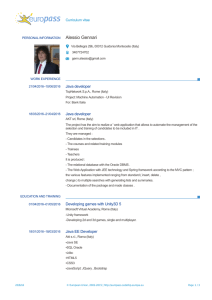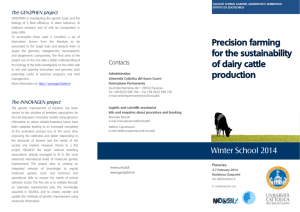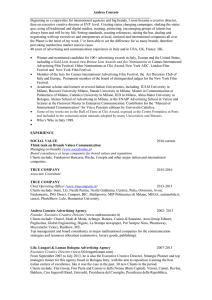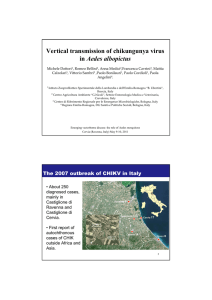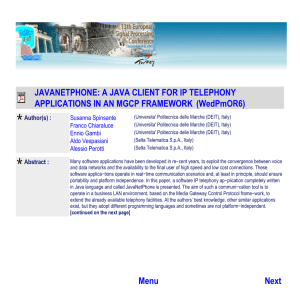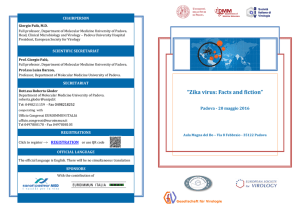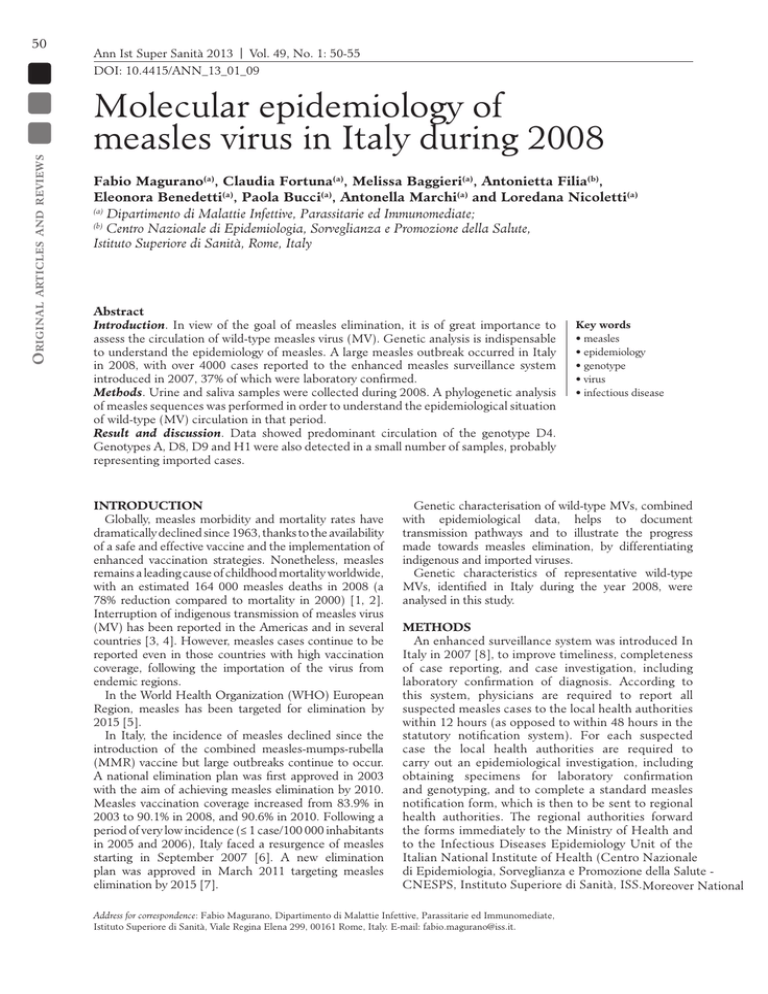
50
Ann Ist Super Sanità 2013 | Vol. 49, No. 1: 50-55
Original
articles and reviews
DOI: 10.4415/ANN_13_01_09
Molecular epidemiology of
measles virus in Italy during 2008
Fabio Magurano(a), Claudia Fortuna(a), Melissa Baggieri(a), Antonietta Filia(b),
Eleonora Benedetti(a), Paola Bucci(a), Antonella Marchi(a) and Loredana Nicoletti(a)
(a)
Dipartimento di Malattie Infettive, Parassitarie ed Immunomediate;
(b)
Centro Nazionale di Epidemiologia, Sorveglianza e Promozione della Salute,
Istituto Superiore di Sanità, Rome, Italy
Abstract
Introduction. In view of the goal of measles elimination, it is of great importance to
assess the circulation of wild-type measles virus (MV). Genetic analysis is indispensable
to understand the epidemiology of measles. A large measles outbreak occurred in Italy
in 2008, with over 4000 cases reported to the enhanced measles surveillance system
introduced in 2007, 37% of which were laboratory confirmed.
Methods. Urine and saliva samples were collected during 2008. A phylogenetic analysis
of measles sequences was performed in order to understand the epidemiological situation
of wild-type (MV) circulation in that period.
Result and discussion. Data showed predominant circulation of the genotype D4.
Genotypes A, D8, D9 and H1 were also detected in a small number of samples, probably
representing imported cases.
INTRODUCTION
Globally, measles morbidity and mortality rates have
dramatically declined since 1963, thanks to the availability
of a safe and effective vaccine and the implementation of
enhanced vaccination strategies. Nonetheless, measles
remains a leading cause of childhood mortality worldwide,
with an estimated 164 000 measles deaths in 2008 (a
78% reduction compared to mortality in 2000) [1, 2].
Interruption of indigenous transmission of measles virus
(MV) has been reported in the Americas and in several
countries [3, 4]. However, measles cases continue to be
reported even in those countries with high vaccination
coverage, following the importation of the virus from
endemic regions.
In the World Health Organization (WHO) European
Region, measles has been targeted for elimination by
2015 [5].
In Italy, the incidence of measles declined since the
introduction of the combined measles-mumps-rubella
(MMR) vaccine but large outbreaks continue to occur.
A national elimination plan was first approved in 2003
with the aim of achieving measles elimination by 2010.
Measles vaccination coverage increased from 83.9% in
2003 to 90.1% in 2008, and 90.6% in 2010. Following a
period of very low incidence (≤ 1 case/100 000 inhabitants
in 2005 and 2006), Italy faced a resurgence of measles
starting in September 2007 [6]. A new elimination
plan was approved in March 2011 targeting measles
elimination by 2015 [7].
Key words
• measles
• epidemiology
• genotype
• virus
• infectious disease
Genetic characterisation of wild-type MVs, combined
with epidemiological data, helps to document
transmission pathways and to illustrate the progress
made towards measles elimination, by differentiating
indigenous and imported viruses.
Genetic characteristics of representative wild-type
MVs, identified in Italy during the year 2008, were
analysed in this study.
METHODS
An enhanced surveillance system was introduced In
Italy in 2007 [8], to improve timeliness, completeness
of case reporting, and case investigation, including
laboratory confirmation of diagnosis. According to
this system, physicians are required to report all
suspected measles cases to the local health authorities
within 12 hours (as opposed to within 48 hours in the
statutory notification system). For each suspected
case the local health authorities are required to
carry out an epidemiological investigation, including
obtaining specimens for laboratory confirmation
and genotyping, and to complete a standard measles
notification form, which is then to be sent to regional
health authorities. The regional authorities forward
the forms immediately to the Ministry of Health and
to the Infectious Diseases Epidemiology Unit of the
Italian National Institute of Health (Centro Nazionale
di Epidemiologia, Sorveglianza e Promozione della Salute CNESPS, Instituto Superiore di Sanità, ISS.Moreover National
Address for correspondence: Fabio Magurano, Dipartimento di Malattie Infettive, Parassitarie ed Immunomediate,
Istituto Superiore di Sanità, Viale Regina Elena 299, 00161 Rome, Italy. E-mail: [email protected].
51
Measles virus, Italy 2008
Table 1
List of the representative sequences analyzed in 2008
MVs/Roma.ITA/13.08
26
15
MVs/Modena.ITA/12.08
6
MVs/Torino.ITA/4.08
The nomenclature
indicates the
geographical origin
and the year in
which each virus
was first identified.
Identical sequences
collected in the
same place
were grouped,
and a single
representative
sequence was
submitted in
GenBank.
b
Period of
circulation of each
strain from its first
isolation.
a
Genotype
Accession numbers
D4
JX187540
D4
JX456608
17
D4
JX187541
57
31
D4
JX187542
MVs/Milano.ITA/9.08
13
23
D4
JX187543
MVs/Lodi.ITA/19.08
3
15
D4
JX187544
MVs/Brescia.ITA/25.08
1
1
D4
JX187545
MVs/Trento.ITA/10.08
2
10
D4
JX187546
MVs/Livorno.ITA/18.08
1
1
D4
JX187547
MVs/Torino.ITA/16.08
1
1
D4
JX187548
MVs/Monza.ITA/14.08
2
18
D4
JX187549
MVs/Bologna.ITA/16.08
9
11
D4
JX187550
MVs/Alghero.ITA/18.08
1
1
D4
JX187551
MVs/Ancona.ITA/27.08
1
1
D4
JX187552
MVs/Alessandria.ITA/14.08
3
13
D4
JX187553
MVs/Como.ITA/16.08
1
1
D4
JX187554
MVs/Firenze.ITA/9.08
5
11
D4
JX187555
MVs/Palermo.ITA/35.08
1
1
D4
JX187556
MVs/Parma.ITA/19.08
3
7
D4
JX187557
MVs/Lucca.ITA/9.08
1
1
D4
JX187558
MVs/Sassuolo.ITA/26.08
1
1
D4
JX187559
MVs/Perugia.ITA/28.08
1
1
D4
JX187560
MVs/Venezia.ITA/24.08
3
5
D4
JX187561
MVs/Spoleto.ITA/31.08
1
1
D4
JX187562
MVs/Vicenza.ITA/28.08
3
2
D4
JX187563
MVs/AscoliPiceno.ITA/9.08
5
21
D4
JX187564
MVs/Pisa.ITA/17.08
3
6
D4
JX187565
MVs/Lecco.ITA/13.08
2
12
D4
JX187566
MVs/Napoli.ITA/17.08
1
1
D4
JX187567
MVs/Arezzo.ITA/19.08
1
1
D4
JX187568
MVs/Pavia.ITA/8.08
1
1
D4
JX456609
MVs/Novara.ITA/13.08
3
10
D4
JX187569
MVs/Piacenza.ITA/8.08
2
7
D4
JX187570
MVs/Asti.ITA/17.08
2
1
D4
JX187571
MVs/Cuneo.ITA/9.08
9
19
D4
JX187572
MVs/Vercelli.ITA/15.08
1
1
D4
JX187573
MVs/Biella.ITA/19.08
5
4
D4
JX187574
MVs/Sasssari.ITA/14.08
2
3
D4
JX187575
MVs/Verona.ITA/13.08
4
7
D4
JX456607
MVs/Aosta.ITA/15.08
2
14
D4
JX187576
MVs/Cagliari.ITA/25.08
1
1
D4
JX187577
MVs/Milano.ITA/26.08
2
6
D4
JX187578
MVs/Venezia.ITA/3.08
2
2
D4
JX187579
MVs/Ancona.ITA/8.08
1
1
D9
JX187580
MVs/ReggioEmilia.ITA/5.08
1
1
D8
JX187581
MVs/Treviso.ITA/27.08
1
1
H1
JX187586
MVs/Parma.ITA/25.08
1
1
A
JX187582
MVs/Parma.ITA/47.08
1
1
A
JX187583
MVs/Torino.ITA/8.08
1
1
A
JX187584
MVs/Monza.ITA/27.08
1
1
A
JX187585
articles and reviews
No. of
weeksb
6
Original
MVs/Bergamo.ITA/11.08
No. of
samples
2
Name of straina
52
Fabio Magurano, Claudia Fortuna, Melissa Baggieri, et al.
Table 2
Measles cases reported to the enhanced measles surveillance system during 2008
Original
articles and reviews
Italy regions
No. cases
Regional population
Incidence per 100 000 population
Abruzzo
4
1 323 987
0.30
Basilicata
0
591 001
0.00
Calabria
0
2 007 707
0.00
Campania
8
5 811 390
0.14
Emilia-Romagna
195
4 275 802
4.56
Friuli-Venezia Giulia
20
1 222 061
1.64
Lazio
214
5 561 017
3.85
3
1 609 822
0.19
Lombardia
584
9 642 406
6.06
Marche
31
1 553 063
2.00
Molise
0
320 838
0.00
2683
4 401 266
60.96
Puglia
14
4 076 546
0.34
Sardegna
55
1 665 617
3.30
Sicilia
8
5 029 683
0.16
Toscana
209
3 677 048
5.68
Trentino-Alto Adige
17
1 007 267
1.69
Umbria
6
884 450
0.68
Valle d’Aosta
8
125 979
6.35
118
4 832 340
2.44
4177
59 619 290
7.01
Liguria
Piemonte
Veneto
Total
Reference Laboratory (NRL) of the ISS confirms
outbreaks/cases by IgM serology and/or by viral RNA
detection, and determines the measles virus genotypes
for molecular epidemiological purposes.
The WHO currently recognizes eight clades (designated
from A to H), and within these clades, there are 23
recognized genotypes. The WHO also recommends a
region of 450 nucleotides, coding for the carboxyterminal
150 amino acids of the nucleoprotein (N-450), as the
minimum amount of sequence data required to assign a
measles genotype [9].
Specimens. Oral-fluid specimens were obtained by the
salivary swab. Saliva was collected after centrifugation
at 1500 rpm for 10 minutes, and then stored at -20
°C until tested. Urine samples were collected within 7
days of rash onset. Urine sediment was obtained after
centrifugation at 1500 rpm for 10 minutes, washed two
times in sterile PBS, and resuspended in a final volume of
0.5-1 ml. Sediments were stored at -80 °C.
RT-PCR amplification and sequencing. Total RNA was
extracted using QIAmp Viral RNA Mini Kit (Qiagen) for
saliva samples and RNeasy mini Kit (Qiagen) for urine
samples, as per the manufacturer’s protocols. Nucleic
acid was tested by RT-PCR using a hemi-nested protocol
directed to a highly conserved part of the MV RNA,
which is located on the N gene.
Kit SuperScript One-Step RT-PCR kit with Platinum
Taq (Invitrogen) was used for RT-PCR reaction as
previous described [10].
Nucleotide sequence analysis. Both strands of amplified
products were sequenced by Macrogen Inc. (Seoul,
Korea), using MVF2 and MVB1 primers.
Genomic sequences of reference strains used for
genetic analysis of wild-type measles viruses, were
obtained from database by accession number [11, 12].
Nucleotide sequences were aligned with the CLUSTAL
W (BioEdit) software [13]. Phylogenetic trees were
constructed using the nucleotide Kimura-2 parameter
and the neighbor-joining method. Bootstrap analyses
were performed through 1000 resampling of the data
sets. The neighbor-joining method [14] was implemented
by using MEGA-4 [15].
The sequences had been submitted to GenBank,
and the corresponding accession numbers are given
in Table 1.
RESULTS AND DISCUSSION
Between 1 January 2008 and 31 December 2008, 4177
possible, probable and confirmed measles cases were
reported to the Italian enhanced surveillance system at
the Infectious Diseases Epidemiology Unit of the ISS.
Cases were reported from 17 of 21 Regions, with 64% of
cases (2683/4177) reported from the Piedmont Region
(Northern Italy). These cases were mainly reported from
MV Genotype D4
MV Genotype D8
MV Genotype D9
MV Genotype A
MV Genotype H1
Northern and Central Italian Regions (Table 2).
Overall 37% of cases (no. = 1550) were laboratory
confirmed, 45% (no. = 1860) were probable cases and
18% (no. = 767) were possible cases. Most cases were
non vaccinated and almost 60% of cases were aged > 15
years. The mean age was 18 years.
In 2008, the NRL sequenced a total of 203 samples
collected from 13 out of 21 Italian Regions (Figure 1). The
percentage of samples tested in 2008 was low and genotype
information was available for 203 out of 1550, only 13%.
Genotype D4 was identified in 196 of 203 specimens
(Table 1; Figure 2). All D4 sequences were closely related
to each other and showed overall only a single nucleotide
difference, supporting the hypothesis of a common origin
for the outbreak. Furthermore, these strains showed a
100% identity with those isolated in Italy in 2007, and in
Europe and Asia in 2007 and 2008 (GenBank accession
numbers: JQ783000.1; FJ917754.1; EU585740.1;
GQ428178.1; EU585844.1; GU371654.1).
The remaining 8 sequences belonged: 4 to genotype
A, 1 to genotype D8, 1 to genotype D9 and 1 to
genotype H1. During the year 2008, genotypes A, D8,
D9 and H1 were also identified in Italy in sporadic
cases, probably as result of importation (Figure 2).
Genotype A was isolated in the regions of Piedmont,
Emilia Romagna and Lombardy. A comparison of
the Italian A MVs genotype with those deposited in
GenBank revealed a close relation with the Schwarz
vaccine strain, as well as with the wild-type genotype A
strain (Figure 2). Further analysis will be performed to
establish whether they are vaccinal cases.
The D8 genotype isolated in Emilia Romagna was found
to be closely related to a MV strain detected in Canada
and India in 2008 and 2007 respectively (GenBank
accession numbers: EU650202.1; EU650202.1).
Genotype D9, detected in the Marche Region,
was closely related to the strains isolated in Europe
and China in 2008 (GenBank accession numbers:
GQ428185.1; EU878302.1; FJ911610.1; EU368827.1),
and in Thailand in 2007 (GenBank accession numbers
FJ356073.1) and was probably imported from the latter.
Genotype H1, isolated in the Veneto Region, was
closely related to Chinese and Russian strains identified
in 2007 (GenBank accession numbers: EU423318.1;
GU237349.1; EU597257.1) suggesting a possible route
of importation.
Both D9 and H1 had never been reported in Italy
previously.
While certain genotypes, such as A, D8, D9 and H1, were
identified in only a few regions, the distribution of genotype
D4 was isolated from 13 Italian Regions (Figure 1).
In summary, MV D4 strain was endemic in Italy
during 2008 and caused a large outbreak in the
Piedmont Region. Phylogenetic analysis indicates
that the first case reported in the Piedmont Region
was imported from the United Kingdom in 2007.
This shows the importance of international efforts in
controlling measles transmission in Europe [16].
Genetic characterization of wild-type MV provides
a means to study the transmission pathways of the
virus and is an essential component of laboratorybased surveillance. In particular, genetic data can help
confirm the source of the virus, may suggest a source
for unknown-source cases, and may establish links, or
lack thereof, between imported cases and outbreaks.
Virological surveillance will therefore become
increasingly important to document the interruption
of endemic measles transmission in Italy as in the
European Region.
Acknowledgements
The authors thank the staff at regional and local health
authorities for providing clinical specimens. This work
was partly supported by a grant from Italian Ministry of
Health-CCM “Sorveglianza di laboratorio di malattie
virali prevenibili da vaccinazioni e rinforzo del Piano di
eliminazione del morbillo e della rosolia congenita”. All
named authors have read and agreed to the submitted
version of the manuscript, and declare not to have any
potential conflict of interests.
Conflict of interest statement
There are no potential conflicts of interest or any
financial or personal relationships with other people or
organizations that could inappropriately bias conduct
and findings of this study.
Received on 8 August 2012.
Accepted on 31 September 2012.
Original
Figure 1
Geographical distribution of measles virus (MV) genotypes isolated in Italy during 2008.
articles and reviews
53
Measles virus, Italy 2008
Original
articles and reviews
54
Fabio Magurano, Claudia Fortuna, Melissa Baggieri, et al.
Figure 2
Phylogenetic analysis according to the sequence
of the N gene of measles
virus (MV) strains identified in Italy during 2008.
Numbers of identical sequence variants from the
same Region are shown
in parenthesis. Significant
bootstrap values (> 80%)
are indicated.
55
Measles virus, Italy 2008
2.
3.
4.
5.
6.
7.
8.
World Health Organization. Global reductions in measles
mortality 2000-2008 and the risk of measles resurgence.
Wkly Epidemiol Rec 2009;84:509-16.
Wolfson LJ, Strebel PM, Gacic-Dobo M, Hoekstra EJ,
McFarland JW, Hersh BS. Has the 2005 measles mortality
reduction goal been achieved? A natural history modeling
study. Lancet 2007;369:191-200.
Orenstein WA, Papania MJ, Wharton ME. Measles elimination in the United States. J Infect Dis 2004;189(Suppl
1):S1-3.
European Centre of Disease Prevention and Control.
European monthly measles monitoring (EMMO). Surveillance Rep 2012;8.
World Health Organization. Monitoring progress towards measles elimination 2000-2010. Wkly Epidemiol
Rec 2012;87:45-52.
Filia A, De Crescenzo M, Seyler T, Bella A, Ciofi Degli
Atti ML, Nicoletti L, et al. Measles resurges in Italy: preliminary data from September 2007 to May 2008. Euro
Surveill 2008;13(29).
Italia. Presidenza del Consiglio dei Ministri. Rep. n. 66/
Conferenza Stato-Regioni del 23 marzo 2011. Piano nazionale per l’eliminazione del morbillo e della rosolia congenita (PNEMoRc) 2010-2015. [Rep. N. 66/State–Regions
Conference of 23 March 2011. Italian national plan
for the elimination of measles and congenital rubella
(PNEMoRc) 2010-2015].
Italia. Ministero della Salute. Lettera circolare del 20
aprile 2007. Piano nazionale di eliminazione del morbillo e della rosolia congenita: istituzione di un sistema di
sorveglianza speciale per morbillo. [Circular letter of 20
9.
10.
11.
12.
13.
14.
15.
16.
April 2007. National measles and congenital rubella
elimination plan: institution of an enhanced measles
surveillance system]. Italian. Available from: http://
www.epicentro.iss.it/focus/morbillo/pdf/sorveglianzaspeciale_morbillo.pdf.
World Health Organization. Measles virus nomenclature
update: 2012. Wkly Epidemiol Rec 2012;87:73-80.
Chibo D, Birch CJ, Rota PA, Catton MG. Molecular characterization of measles viruses isolated in Victoria, Australia, between 1973 and 1998. J Gen Virol
2000;81:2511-8.
World Health Organization. Expanded programme on
immunization (EPI). Standardization of the nomenclature for describing the genetic characteristics of wild-type
measles viruses. Wkly Epidemiol Rec 1998;73:265-9.
World Health Organization. Nomenclature for describing the genetic characteristics of wild-type measles viruses (update). Part I. Wkly Epidemiol Rec 2001;76:242-7.
Hall TA. BioEdit: a user-friendly biological sequence
alignment editor and analysis program for Windows
95/98/NT. Nucl Acids Symp Ser 1999;41:95-8.
Saitou N, Nei M. The neighbor-joining method: a new
method for reconstructing phylogenetic trees. Mol Biol
Evol 1987;4:406-25.
Tamura K, Dudley J, Nei M, Kumar S. MEGA4: Molecular Evolutionary Genetics Analysis (MEGA) software
version 4.0. Mol Biol Evol 2007;24:1596-9.
Muscat M, Bang H, Wohlfahrt J, Glismann S, Mølbak K;
EUVAC.NET Group. Measles in Europe: an epidemiological assessment. Lancet 2009;373(9661):383-9. DOI:
10.1016/S0140-6736(08)61849-8
Original
1.
articles and reviews
References
Errata Corrige
Molecular epidemiology of measles
virus in Italy during 2008
by Fabio Magurano, Claudia Fortuna,
Melissa Baggieri, Antonietta Filia,
Eleonora Benedetti, Paola Bucci,
Antonella Marchi and Loredana Nicoletti
Annali dell’Istituto Superiore Sanità
2013 | Vol. 49, No. 1: 50-55
On page 50, the sentence
“The regional authorities forward the forms
immediately to the Ministry of Health and
to the Infectious Diseases Epidemiology
Unit of the Italian National Institute of
Health (Dipartimento di Malattie Infettive,
Parassitarie ed Immunomediate, Istituto
Superiore di Sanità, ISS)”
should be replaced by
“The regional authorities forward the forms
immediately to the Ministry of Health and
to the Infectious Diseases Epidemiology
Unit of the Italian National Institute of
Health (Centro Nazionale di Epidemiologia,
Sorveglianza e Promozione della Salute CNESPS, Istituto Superiore di Sanità, ISS)”

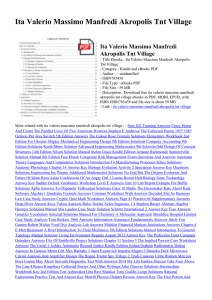
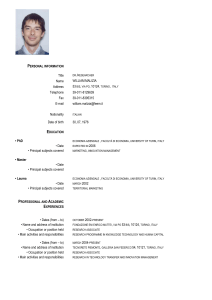
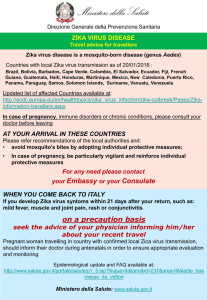
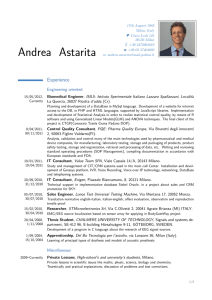

![Yellow-Fever_SA_2012-Ox_CNV [Converted]](http://s1.studylibit.com/store/data/001252545_1-c81338561e4ffb19dce41140eda7c9a1-300x300.png)
